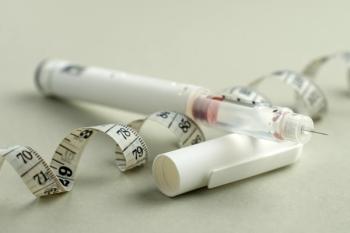
Several Comorbidities Found to Reduce Likelihood of Pneumococcal Vaccination, While Use of Implantable Devices Heightens Odds
Key Takeaways
- Implantation of permanent medical devices is linked to higher PCV13 uptake in heart failure patients, while comorbidities like COPD and hypertension reduce vaccination likelihood.
- PCV13 vaccination did not significantly impact all-cause mortality in heart failure patients, highlighting the need for further research to confirm these findings.
A new study reveals that heart failure patients with implantable devices are more likely to receive the pneumococcal conjugate vaccine 13, impacting vaccination rates and mortality.
According to the results of a study published by investigators in Medicina, the implantation of a permanent medical device is associated with increased uptake of pneumococcal conjugate vaccine-13 (PCV13), whereas the presence of several comorbidities, including a medical history of chronic obstructive pulmonary disease (COPD) or hypertension, was associated with a lower likelihood of vaccination.1
Globally, heart failure (HF) is a significant health concern, with a 5-year mortality rate of 43%, even with meaningful advances in management and treatment. Concerningly, infections such as pneumonia account for the immediate cause of death in patients with HF about 10% of the time. In 1 trial, the OPTIMIZE-HF study, pneumonia accounted for 15.3% of hospitalizations in patients with HF and was associated with a 60% increase in in-hospital mortality.1,2
With available remedies in the form of PCV vaccines, it is critical to determine factors associated with vaccine uptake among patients with HF. PCVs are proven safe and effective, with PCV13 showing significant reductions in mortality in those at a high risk of cardiovascular events, including patients with HF. The present study examined patients with chronic HF and reduced ejection fraction (EF) to determine such factors associated with uptake. Furthermore, they aimed to better understand the relation between short-term all-cause mortality in HF and vaccination with PCV13.1,3
In the current study, patients with HF who were over 18 years old were prospectively enrolled at the academic cardiology center of the investigators. Because PCV13 has only been available commercially for the past 5 years, patients who had recorded at least 1 shot of PCV13 were accepted as vaccinated. In total, 193 of the 450 patients (42.9%) included in the cohort were vaccinated for PCV13.1
According to the investigators, patients vaccinated with PCV13 had a lower EF and were more likely to have a cardiac implanted electronic device, most often an implantable cardioverter/defibrillator (ICD), cardiac resynchronization device with defibrillator (CRT-D), or left ventricular assist device. Notably, these patients were also less likely to have a history of hypertension or COPD; these results remained similar in the univariable analysis, which reaffirmed that those with a past medical history of the conditions had a lower likelihood of being vaccinated.1
Shifting to an analysis of mortality, vaccination was not associated with all-cause mortality in either the overall study population or the propensity-score-matched cohort. Furthermore, in each of 3 exploratory subgroup analyses, vaccination with PCV13 was not related to all-cause mortality in patients aged over 65 years, patients with COPD, or patients who were active smokers. The investigators issued a caution regarding the viability of this result, however, given various limitations associated with the study that limit the robustness of the finding.1
The finding regarding implantable devices and likelihood to receive PCV13 was especially notable to the researchers. In their discussion, they explained that implantable electronic devices and left ventricular assist devices can be “felt” by the patient, serving as a consistent reminder of their HF and enhancing the perceived risk of associated infections. Multiple studies, including 1 conducted by Vardeny et al, have found similar observations for influenza vaccinations in patients with HF. Ultimately, they could not rule out random associations that may have caused these findings, noting that further studies would be useful to elucidate these outcomes.1,4
“While a decrease in mortality with PCV-13 vaccination could not be demonstrated in the present study, this finding reflects the limitations of the present analysis,” the study investigators concluded. “This emphasizes the need to conduct adequately powered clinical studies and trials to fill this evidence gap.”1
REFERENCES
1. Velibey Y, Kahraman E, Oz M, et al. Demographic and clinical determinants of conjugated pneumococcal vaccine uptake and short-term all-cause mortality in vaccinated and unvaccinated cohorts in patients with heart failure and reduced ejection fraction: A prospective cohort study. Medicina. 2025;61(5):869. doi:10.3390/medicina61050869
2. Fonarow GC, Stough WG, Abraham WT, et al. Characteristics, treatments, and outcomes of patients with preserved systolic function hospitalized for heart failure: A report from the OPTIMIZE-HF registry. JACC. 2007;50(8):768-777. doi:10.1016/j.jacc.2007.04.064
3. Antunes MM, Duarte G, Brito D, et al. Pneumococcal vaccination in adults at very high risk or with established cardiovascular disease: systematic review and meta-analysis. European Heart Journal. 2021;7(1):97-106. doi:10.1093/ehjqcco/qcaa030
4. Vardeny O, Claggett B, Udell JA, et al. Influenza vaccination in patients with chronic heart failure: The PARADIGM-HF trial. J Am Coll Cardiol HF. 2016;4(2):152-158. doi: 10.1016/j.jchf.2015.10.012
Newsletter
Stay informed on drug updates, treatment guidelines, and pharmacy practice trends—subscribe to Pharmacy Times for weekly clinical insights.



















































































































































































































